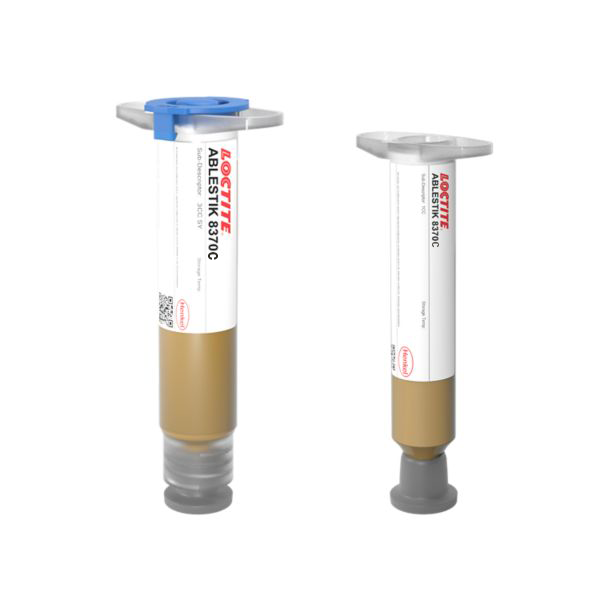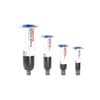LOCTITE ABLESTIK 8370C
- Gold Filled
- High electrical conductivity
- Works on Noble finished substrates
Product Description
LOCTITE ABLESTIK 8370C adhesive is designed for automatic dispensing operations, where silver migration is a concern. In addition to being more resistant to electrochemical migration, it also has more stable reflectivity. Compared to silver filled adhesives that might get less reflective due to Sulphur in the atmosphere (or the adhesive), this material will retain its properties and won't potentially affect the performance of optical devices.
LOCTITE ABLESTIK 8370C is a dispensable gold filled adhesive than can replace Silver filled alternatives when migration is not acceptable at all. It is compatible with Noble substrate finishes and should not be used in Sn terminations. Even though Silver migration is unlikely to happen in overmolded packages, there are certain applications that can be susceptible to it such as Automotive LED and that is where this high cost and high performance product shines.
Cure Schedule
- 1 hour @ 150°C
Technical Specifications
| Physical Properties | |||||||||
| Thixotropic index Thixotropic index Thixotropic Index is a ratio of a material s viscosity at two different speeds in Ambient temperature, generally different by a factor of ten. A thixotropic material s viscosity will decrease as agitation or pressure is increased. It indicates the capability of a material to hold its shape. Mayonnaise is a great example of this. It holds its shape very well, but when a shear stress is applied, the material easily spreads. It helps in choosing a material in accordance to the application, dispense method and viscosity of a material. | 5.5 | ||||||||
| Viscosity Viscosity Viscosity is a measurement of a fluid’s resistance to flow. Viscosity is commonly measured in centiPoise (cP). One cP is defined as the viscosity of water and all other viscosities are derived from this base. MPa is another common unit with a 1:1 conversion to cP. A product like honey would have a much higher viscosity -around 10,000 cPs- compared to water. As a result, honey would flow much slower out of a tipped glass than water would. The viscosity of a material can be decreased with an increase in temperature in order to better suit an application | 18,000 mPa.s | ||||||||
| Chemical Properties | |||||||||
| |||||||||
| Electrical Properties | |||||||||
| Volume Resistivity Volume Resistivity Volume resistivity, also called volume resistance, bulk resistance or bulk resistivity is a thickness dependent measurement of the resistivity of a material perpendicular to the plane of the surface. | 5.0x10-4 Ohms⋅cm | ||||||||
| Thermal Properties | |||||||||
| |||||||||
| Glass Transition Temperature (Tg) Glass Transition Temperature (Tg) The glass transition temperature for organic adhesives is a temperature region where the polymers change from glassy and brittle to soft and rubbery. Increasing the temperature further continues the softening process as the viscosity drops too. Temperatures between the glass transition temperature and below the decomposition point of the adhesive are the best region for bonding. The glass-transition temperature Tg of a material characterizes the range of temperatures over which this glass transition occurs. | 82 °C | ||||||||
| Thermal Conductivity Thermal Conductivity Thermal conductivity describes the ability of a material to conduct heat. It is required by power packages in order to dissipate heat and maintain stable electrical performance. Thermal conductivity units are [W/(m K)] in the SI system and [Btu/(hr ft °F)] in the Imperial system. | 4.9 W/m.K | ||||||||




